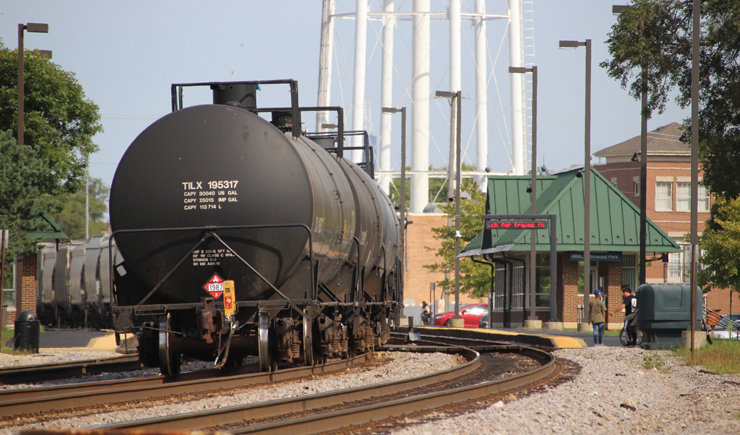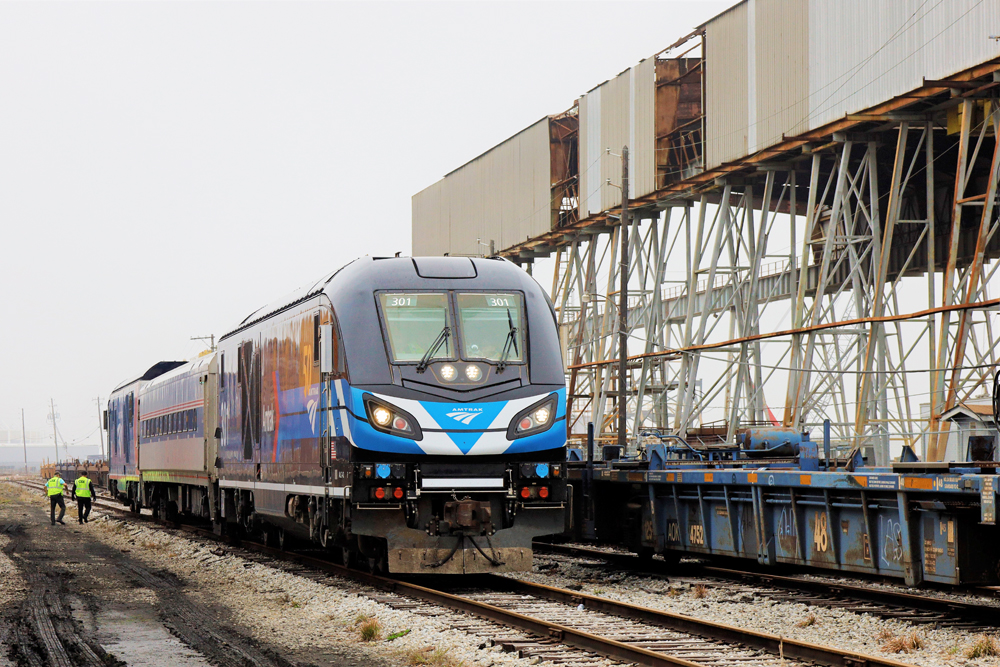
WASHINGTON – Railroads are trying to shift liability for the shipment of hazardous materials to chemical producers, a trade association says in a letter to federal regulators.
The American Chemistry Council, which represents chemical manufacturers, raised concerns about railroad liability and insurance requirements in a letter this week to the Surface Transportation Board.
“Railroads leverage their market power to impose requirements on customers beyond what would be possible in a more competitive marketplace. These requirements inappropriately minimize railroad liability for transportation risks that the railroad itself has the greatest ability to mitigate. This potentially undermines both the safety and viability of shipping hazardous materials by rail,” Chris Jahn, the chemistry council’s CEO, wrote.
Rail is the safest way to move hazardous materials, including toxic inhalation hazard materials such as chlorine, Jahn noted. “It is essential to our nation’s economy and public safety that these materials continue to move by rail,” he wrote.
The insurance policies carried by Class I railroads typically provide $1 billion to $1.5 billion worth of coverage, which the chemistry council says is enough to “cover the vast majority of foreseeable incidents” when combined with self-insurance.
The Feb. 3 hazardous materials derailment in East Palestine, Ohio, has already cost Norfolk Southern nearly $1 billion, although the railroad says it will seek reimbursement from shippers and railcar owners who were involved in the derailment.
The derailment has increased scrutiny of hazardous materials shipments by rail and the risk they pose to lineside communities.
“Shippers share in the cost of insurance and legal liability through the rates they pay for rail service. ACC is not aware of evidence in the public record to quantify the unique railroad costs for transporting hazardous materials,” Jahn wrote. “However, railroads have wide latitude to recoup such costs through ratemaking. Railroads have commonly told ACC member companies that the high rates charged for carrying hazardous materials are driven by the cost of insurance and the additional liability posed by these materials.”
Chemical traffic brings in the highest revenue per unit of any carload commodity, and chemical producers’ supply chains are among the most rail-dependent of any industry.
Most railroads have imposed tariffs that include insurance and indemnity requirements for toxic inhalation hazard shipments, the ACC says, on top of the rates shippers already pay.














For those who never heard the term before, HAZWOPER is “Hazardous Waste Operations and Emergency Response.”
Here’s the Official Word:
https://www.osha.gov/emergency-preparedness/hazardous-waste-operations/faq-hazpower
U.S. railroads do provide hazmat training to their operating employees. Conductors, engineers, train dispatchers, etc. and their supervisors attend hazmat classes regularly. I am a retired train dispatcher, but I still keep my Emergency Response Guidebook.
Perhaps the railroads want the American Chemistry Council to take a more active role in the design and ownership of tank cars to ablate their risk. It allows the railroads to stay lazy and reactive and only deal with “railroad stuff” like hot box detectors and signaling.
Interesting coincidence with the Bailey Yard story the same day.
Of course those shipping dangerous chemicals should provide most of their own insurance. What otherwise would be an uncomplicated derailment with few casualties can become disastrous or even catastrophic with dangerous chemicals.
At one time those chemicals were only a small minority of the cars, but have become ever more numerous.
I think the liability should fall more on the lease fleet of cars transporting the hazardous materials. the standards for inspection should be tightened. a large majority of these cars are over 30 years old or older. How often are they given a thorough inspection? Does that responsibility fall on the railroad or the leasing company?
In the 70s and early 80s dangerous placarded cars had to be 6 cars in from the front or rear of the train.
Does anybody else think having loaded ethanol cars on the end of 200 car freight trains is a bad idea And unacceptable?
The requirement six from the rear applied due to cabooses.
Respectfully Sir, it is Hazmat.
Further, as stated previously I am amazed that Hazwoper Training is not required, at a minimum for supervisors in the USA. Not just in Railroading, but across the board in transportation issues.
Well?? If I ship hazardous materials in a truck what is the liability? If my HAX MAT truck is hit by another vehicle causing a spill no fault on my part who has the responsibility?